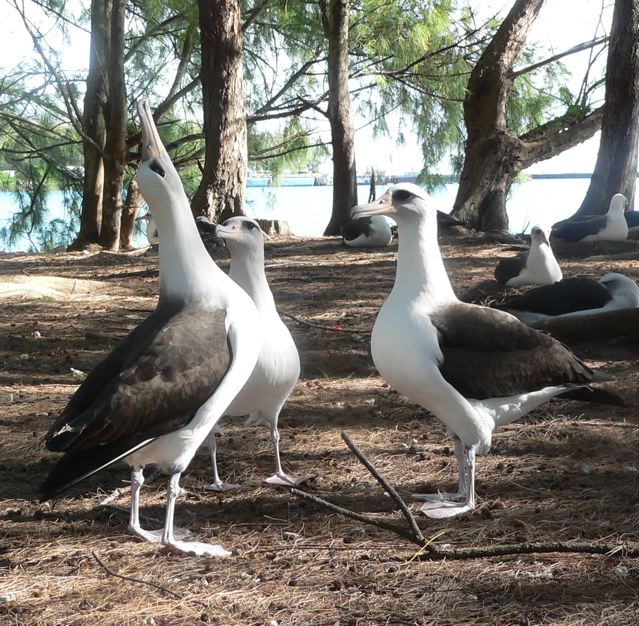Published in the Ocean Watch column, Honolulu Star-Advertiser © Susan Scott
December 28, 2007
MIDWAY ATOLL » Each evening here at Midway, we albatross counters share our experiences of the day over dinner.
The stories vary widely because even though albatrosses look alike and have common behaviors, each has a personality all its own.
Some differences between the birds are obvious, such as the temperament of the two albatross species that breed here, Laysans and black-footed.
After a long day of counting last week, I sank to a sandy spot to rest and discovered that I’d plopped down within pecking distance of two nesting Laysans. Both stared calmly at the giant between them and, a moment later, fell asleep.
I would never accidentally sit or even stand that close to the spunky black-foots. Most would let me know with vigorous honking and bill clapping that trespassers will not be tolerated.
But not always. Some black-footed albatrosses barely move as we pass by, and Laysans aren’t all meek. I’ve been surprised several times by a painful peck to the leg from a snappy Laysan.
Still, considering the thousands of albatrosses we pass each day in our counts, nips from either species are amazingly few. As a group, albatrosses are gentle birds with endearing behaviors.
One of my favorites is egg talk. A brooding parent occasionally stands over its egg, touches it lightly with the beak and murmurs bird-style baby talk. After this tender moment, the parent settles back down on its future offspring.
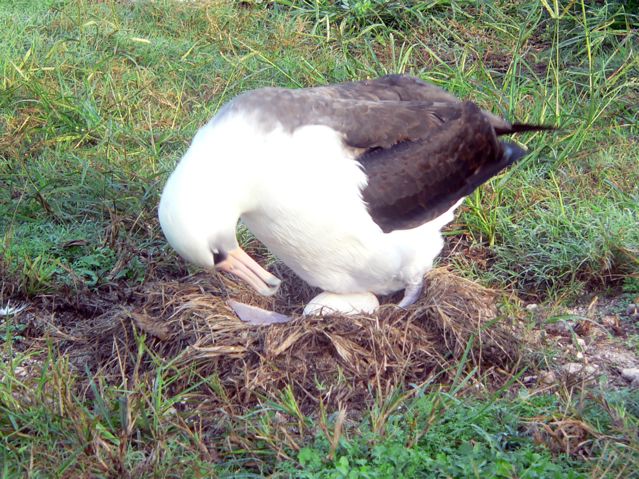
Other communication occurs when a parent comes back from fishing to take its turn at egg-sitting. Before the exchange, the couple preen, cuddle and softly converse. This can go on for hours because the sitting bird is reluctant to leave its precious charge. It’s common to see a partner gently nudging its way into the nest.
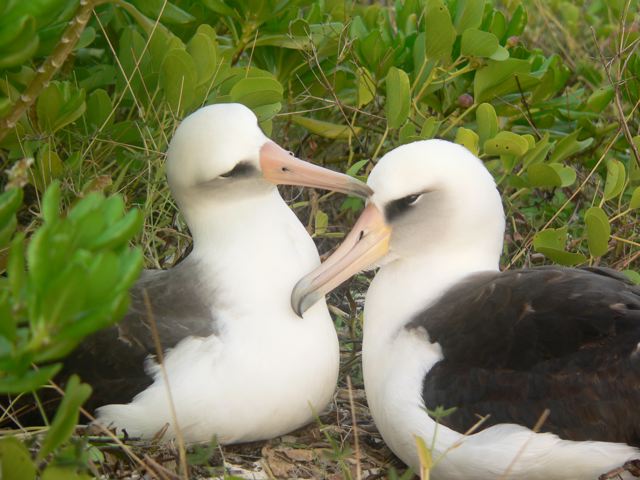
Nest construction varies widely. Some albatrosses are minimalists, laying their egg on flat ground with barely a circle around it. On the other end are the Taj Mahal nests, built high with sticks, sand, grass and plastic junk, commonly bottle caps and cigarette lighters. After strong winds and rain, the colony bustles with activity as the birds make repairs.
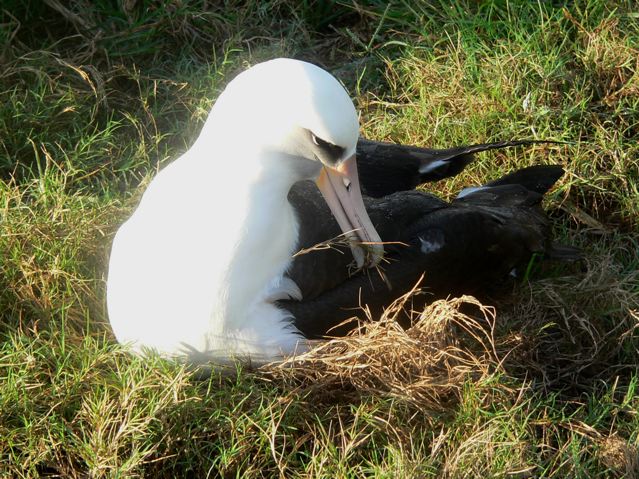 Minimalist nester
Minimalist nester
The urge to produce and protect an egg is so strong in albatrosses during breeding season that eggless birds often sit on rocks, fishing floats or anything else lying around. One day, a Laysan tried to settle onto my team member’s paint can.
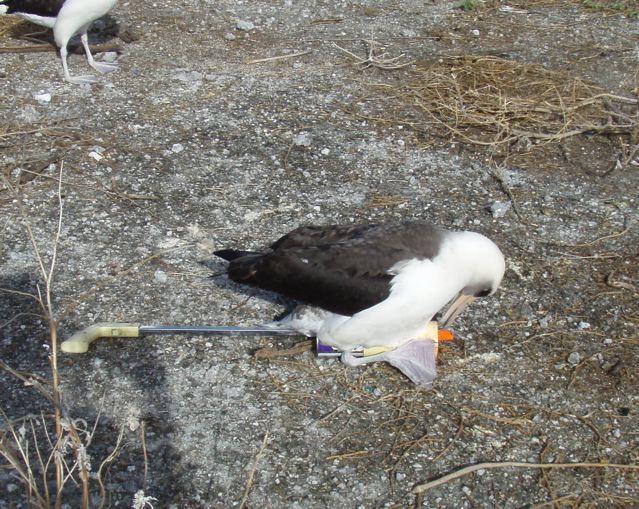
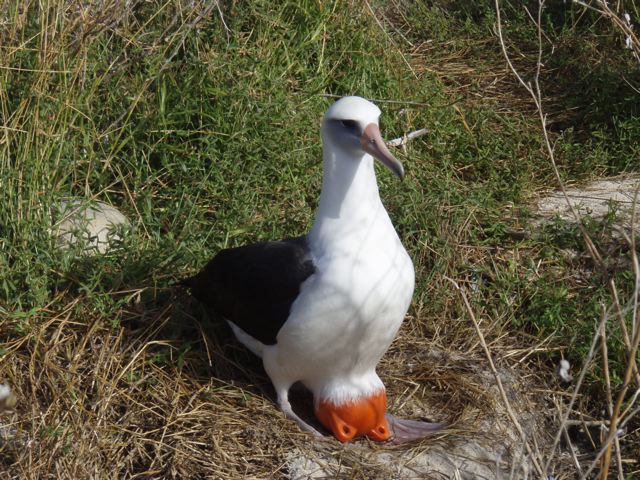
Then, of course, there are the subadults, or walkers, that wander through the colony by the thousands singing, dancing and playing house. Albatrosses mature at 5 to 7 years old, but before that they practice courting in pairs or small groups.
Thousands of these parties go on day and night, the young birds calling, sky-pointing and bobbing in circles. Occasionally, a walker stumbles into
a cranky nester, and a fight ensues. But mostly, these youngsters’ gatherings are exuberant events that sometimes get so boisterous we’re compelled to stop working and watch.
In the middle of all this are running takeoffs, somersault landings and overhead soaring so graceful my heart soars, too.
Albatross stories range from funny to sad to touching and are a joy to share. I can’t think of a better way to start the new year than by helping to make sure those stories continue.
